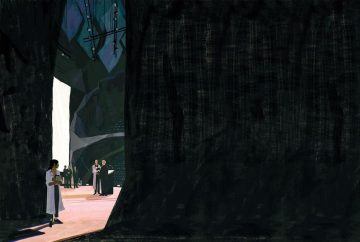Susan Dominus in Smithsonian Magazine:
 In 1969, Margaret Rossiter, then 24 years old, was one of the few women enrolled in a graduate program at Yale devoted to the history of science. Every Friday, Rossiter made a point of attending a regular informal gathering of her department’s professors and fellow students. Usually, at those late afternoon meetings, there was beer-drinking, which Rossiter did not mind, but also pipe-smoking, which she did, and joke-making, which she might have enjoyed except that the brand of humor generally escaped her. Even so, she kept showing up, fighting to feel accepted in a mostly male enclave, fearful of being written off in absentia.
In 1969, Margaret Rossiter, then 24 years old, was one of the few women enrolled in a graduate program at Yale devoted to the history of science. Every Friday, Rossiter made a point of attending a regular informal gathering of her department’s professors and fellow students. Usually, at those late afternoon meetings, there was beer-drinking, which Rossiter did not mind, but also pipe-smoking, which she did, and joke-making, which she might have enjoyed except that the brand of humor generally escaped her. Even so, she kept showing up, fighting to feel accepted in a mostly male enclave, fearful of being written off in absentia.
During a lull in the conversation at one of those sessions, Rossiter threw out a question to the gathered professors. “Were there ever women scientists?” she asked. The answer she received was absolute: No. Never. None. “It was delivered quite authoritatively,” said Rossiter, now a professor emerita at Cornell University. Someone did mention at least one well-known female scientist, Marie Curie, two-time winner of the Nobel Prize. But the professors dismissed even Curie as merely the helper to her husband, casting him as the real genius behind their breakthroughs. Instead of arguing, though, Rossiter said nothing: “I realized this was not an acceptable subject.” Acceptable or not, the history of women in science would become Rossiter’s lifework, a topic she almost single-handedly made relevant. Her study, Women Scientists in America, which reflected more than a decade of toil in the archives and thousands of miles of dogged travel, broke new ground and brought hundreds of buried and forgotten contributions to light. The subtitle—Struggles and Strategies to 1940—announced its deeper project: an investigation into the systematic way that the field of science deterred women, and a chronicling of the ingenious methods that enterprising women nonetheless found to pursue the knowledge of nature. She would go on to document the stunted, slow, but intrepid progress of women in science in two subsequent volumes, following the field into the 21st century.
More here.
